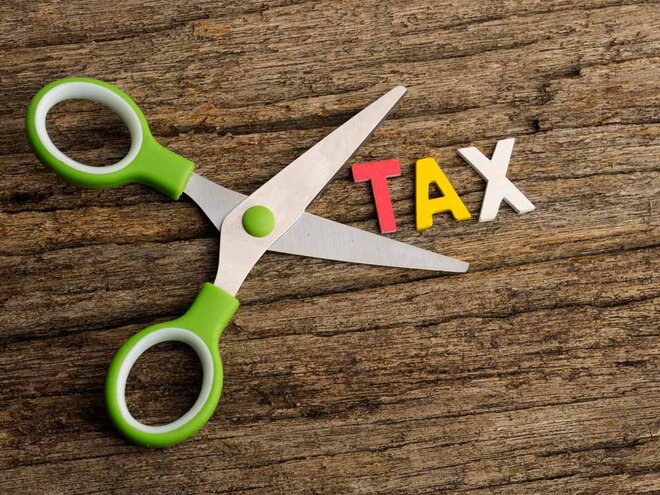
Taxes can be saved through insurance, fixed-income options or equity-linked investments like ELSS. However, it is extremely important to pick up the right tax-saving option that matches your investment objective and horizon. Here are a few pointers to help you pick the right tax-saving options this year.
Saving tax through insurance
Buying an insurance cover is not always the smartest way to save taxes under Section 80C. Especially when you are buying life insurance plans with an investment element in them. Such plans offer very little life insurance cover. They are also not an ideal investment option as they mostly offer modest returns. Further, getting rid of these plans may result in losing a part of the money invested. However, most taxpayers accumulate such plans over a period during their last-minute shopping. Stay away from such plans this financial year.
Life insurance is meant to support the dependents of an earning member. However, when the insurance cover is not large enough to take care of the financial needs of dependents, the whole purpose is defeated. That is where term insurance products come in. Term insurance plans have a very low premium and you can buy an adequate life insurance cover by paying a relatively low premium in them. So, say no to all other insurance products like traditional and non-traditional plans like Endowment, Whole-life, Money-back, Unit Linked Insurance Plan, Unit Linked Pension Plan, etc.
Another insurance product that offers tax savings is health insurance. It is important to opt for a health insurance policy not to save taxes but to protect oneself from the financial hardship that ill-health could bring. Section 80D of the Income Tax Act allows for the deduction of health insurance premiums of up to Rs 25,000 for insurance of self, spouse and dependent children, which goes up to Rs 50,000 in the case of senior citizens. Additionally, a deduction of Rs 25,000 is available for buying health insurance cover for parents which goes up to Rs 50,000 in case they are senior citizens. Also, any payments made towards preventive health check-ups for yourself, spouse, dependent children or parents also qualify for a deduction of up to Rs 5000, but only up to the overall limit under 80D.
Fixed-return options
The Public Provident Fund (PPF), National Savings Certificate(NSC), five-year bank fixed deposits and a similar tenured Post Office Time Deposit are some fixed-return tax-saving options that can help you to reduce your tax liability. These instruments work on the simple premise of providing a fixed rate of return for a fixed tenure for which the savings are locked in. Now you can also invest in the Sukanya Samriddhi Yojana and save taxes. This scheme, as the name indicates, is meant specially for saving for the girl child.
When selecting any of the savings options as a tax saver, keep in mind not just the returns but also the lock-in period along with the tax treatment for the interest accrued and proceeds received at the time of maturity. For instance, in the case of the PPF, at the time of maturity, the entire sum is tax free. However, in the case of the NSC, at the time of maturity, the gains are taxed, however, it can be claimed as a deduction under Section 80C as it is automatically reinvested. Also, in case of five-year bank FD, the interest earned is taxable as per the investor's tax bracket and thus TDS becomes applicable which diminishes the compounding effect.
For senior citizens, it is worth mentioning here that, as per section 80TTB, they can claim deduction on interest earned from all type of deposits with banks, co-operative banks and post office subject to an overall maximum limit of Rs 50,000.
Equity-linked options
Among all the tax-saving options, there are just two instruments that should be considered for investing which have an equity exposure: Equity-Linked Savings Scheme (ELSS) and National Pension Scheme (NPS).
A fund qualifies to be an ELSS if it invests more than 65 per cent in equity, has a three-year lock-in on investments and has the necessary approval from tax authorities. Moreover, an ELSS has a three-year lock-in as compared to the minimum five-year lock-in in the case of Unit Linked Insurance Plan (ULIP) and 15 years in the case of the PPF. This makes ELSS the preferred tax-saving choice, which can also offer better returns.
For NPS, investments in NPS Tier I account can provide deduction up to Rs 50,000 in addition to the Rs 1.5Lakh deduction under section 80C in a given financial year. With the NPS, you can choose your asset allocation. The maximum equity exposure allowed is 75%; however, this limit reduces by 2.5% each year beyond 50 years of age. One should bear in mind that NPS Tier-I investments have a lock-in until the investor attains 60 years of age. Post this they can withdraw only upto 60% of the accumulated corpus, while the remainder corpus must be used to purchase an annuity (basically a fixed income investment) that would provide a regular monthly pension.
Further, central government employees may note that there is an additional account called Tier II - Tax Saver Scheme, wherein they can withdraw their invested money after a lock-in period of three years without any limit and enjoy tax benefits that are similar to NPS Tier I account.
Which one should you choose?
Finally, don't let all these options confuse you. Always pick an instrument that suits both your financial needs and risk profile. For example, you should pick an option with the shortest lock-in period if you have cash flow issues. However, this doesn't mean that you should opt for ELSS just because it has the shortest lock-in period. If you don't have the stomach for risk, your choice can be the five-year tax-saving fixed deposits.








